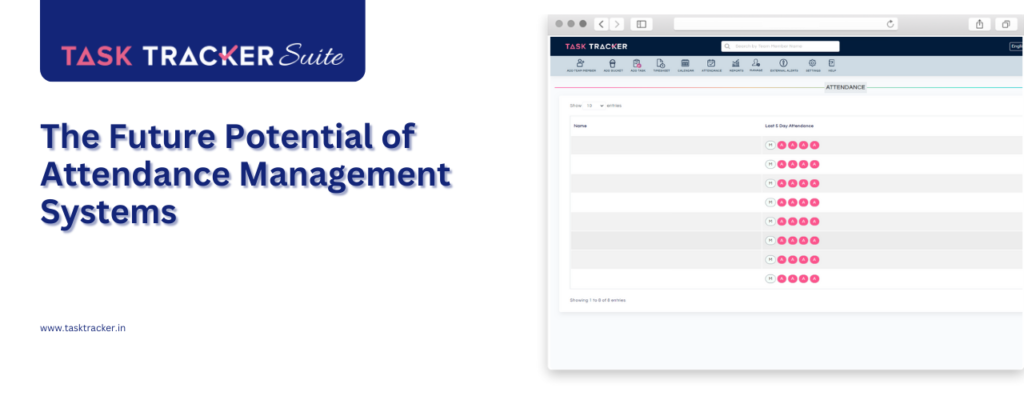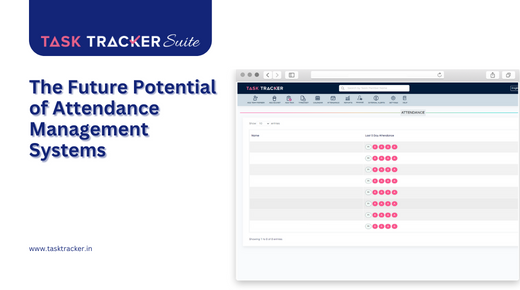
Amid the rapidly changing and dynamic modern workplace, attendance management systems have seamlessly integrated themselves into the core of organizational functioning. These systems play a pivotal role in simplifying the intricate task of monitoring and recording employee attendance, providing businesses with a streamlined approach to adeptly oversee their workforce. Delving into the forthcoming prospects of attendance management systems, this article delves into emerging trends and pioneering innovations that are poised to redefine the realm of workforce management.
Importance of Attendance Management Systems
The significance of attendance management software cannot be overstated, as it plays a vital role in upholding productivity, fostering accountability, and ensuring compliance within enterprises. Through precise monitoring of employee attendance, these software solutions empower companies to uphold a well-functioning workforce, curtail absenteeism, and mitigate instances of time theft. Furthermore, they furnish immediate and actionable insights into employee attendance trends, thereby enabling organizations to make well-informed judgments concerning resource distribution and strategic workforce development.
Current Challenges in Attendance Management
While the advantages are evident, conventional approaches to attendance management frequently encounter a range of obstacles. Manual procedures are susceptible to inaccuracies, demand substantial time, and lack the ability to expand seamlessly. Moreover, the advent of remote work and flexible scheduling has introduced complexities to attendance monitoring. These hurdles underscore the requirement for inventive remedies capable of accommodating the evolving intricacies of contemporary work settings.
Automation and Artificial Intelligence in Attendance Management
The landscape of employee attendance software is undergoing a profound transformation through the integration of automation and artificial intelligence (AI). AI-driven algorithms possess the capability to scrutinize attendance data, detect trends, and produce precise reports. Automated systems further excel in managing leave applications, creating timesheets, and alerting supervisors to irregularities in attendance. By incorporating automation into these functions, enterprises stand to reap benefits such as time savings, diminished administrative overhead, and elevated operational effectiveness.
Biometrics and Facial Recognition
Biometric advancements, including fingerprint scanning and facial recognition, are gaining substantial traction within employee attendance software. These technologies offer both robust security and precise identification, obviating the necessity for conventional ID cards or manual punch-ins. By integrating biometric attendance systems, organizations guarantee the integrity and immutability of attendance data, effectively mitigating the potential for time fraud or unauthorized clock-ins.
Mobile Applications and Geolocation Tracking
Embracing the surge of mobile technology, time and attendance systems tailored for small businesses are capitalizing on mobile applications and geolocation tracking. This innovative approach enables employees to effortlessly log their work hours using their smartphones, obviating the requirement for traditional physical time clocks. Geolocation tracking adds an extra layer of assurance, guaranteeing that employees are indeed present at the specified site when recording their attendance, effectively thwarting any attempts at deceitful practices. This is where Task Tracker can help you!
Data Analytics and Insights
Leading Attendance and task management software like Task Tracker generates extensive data that holds the potential for valuable insights. Utilizing advanced analytics tools, this data can be dissected to unveil attendance patterns, pinpoint trends, and even foresee potential challenges. These invaluable insights equip organizations to base decisions on concrete data, optimize the allocation of resources, and adopt forward-looking attendance management approaches.
Privacy and Security Concerns
Given that attendance management systems gather and retain sensitive employee data, the utmost importance lies in upholding privacy and security. Organizations must meticulously follow stringent data protection regulations and establish resilient security protocols to shield employee information. The implementation of encryption, access controls, and routine security assessments serves as a proactive approach to address privacy apprehensions and uphold the unblemished integrity of data.
Future Innovations and Trends
The future of attendance management systems is poised to bring forth exciting possibilities. Anticipated innovations such as voice recognition, wearable gadgets, and AI-driven sentiment analysis are set to significantly enhance the precision, convenience, and overall monitoring of employee attendance. With the integration of predictive analytics and machine learning algorithms, organizations will gain the capability to recognize attendance trends, foresee upcoming absences, and take proactive steps to enhance attendance and employee engagement.
The horizon for attendance management systems holds considerable promise, propelled by technological advancements and evolving work trends. Elements like automation, biometric authentication, mobile applications, and data analytics are reshaping how companies handle attendance tracking. By embracing these emerging trends and innovations, enterprises can effectively streamline workforce management, boost productivity, and nurture a culture of responsibility.


Leave a Reply